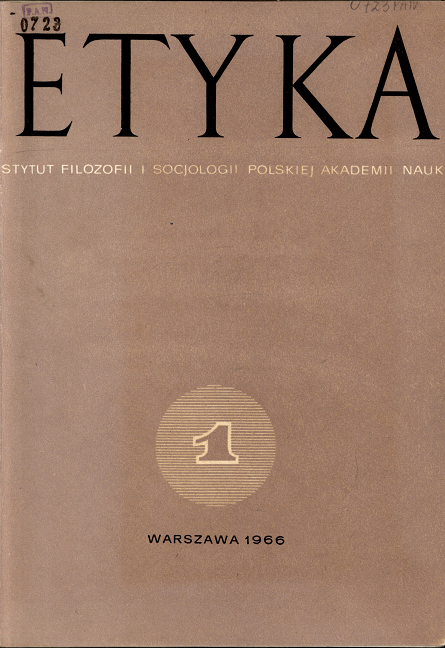Dwojakie normy
Abstrakt
Moral norms usually have the form of statements of obligation containing the words, ‚should’, ‚ought to’, ‚It is required … ‚, etc.; the form proper to a legal norm is the declarative sentence. In both these forms norms with good sense be preceded by the sing of assertion, ‚It is true that … ‚ and construed as a logically true statement affirming the existence of a duty or state of affairs ordained by a legislative institution. Hence, the contrary opinion denying norms to be statements in the logical sense and attributing to them the function of command or recommendation, is incorrect: for, for a norm to be realized an additional act of decision motivated by a norm of either kind, is required. That decision is expressed by an imperative sentence, addressed to the person due to realize the norm (it can also be the same person that issued the norm, commanding himself to execute it). Occasionally imperative sentences replace a norm – as, eg., in the Decalogue; in such cases, they should be regarded as elliptic expressions with an implicit motivating norm understood.Pobrania
Opublikowane
Numer
Dział
Licencja
Prace publikowane w czasopiśmie ETYKA udostępniane są na podstawie licencji Creative Commons Attribution No Derivatives 4.0 International (CC BY-ND), tj. uznanie autorstwa-Bez utworów zależnych. Oznacza to, że Autorki i Autorzy zachowują autorskie prawa majątkowe do utworów i wyrażają zgodę, aby ich prace były zgodnie z prawem ponownie wykorzystywane do dowolnych celów, także komercyjnych, za wyjątkiem tworzenia utworów zależnych (dzieł pochodnych), bez konieczności uzyskania uprzedniej zgody ze Autora lub wydawcy. Artykuły mogą być pobierane, drukowane, powielane i rozpowszechniane z zastrzeżeniem konieczności poprawnego oznaczenia autorstwa oraz oryginalnego miejsca publikacji. Autorzy zachowują prawa autorskie do wspomnianych utworów bez innych ograniczeń.



